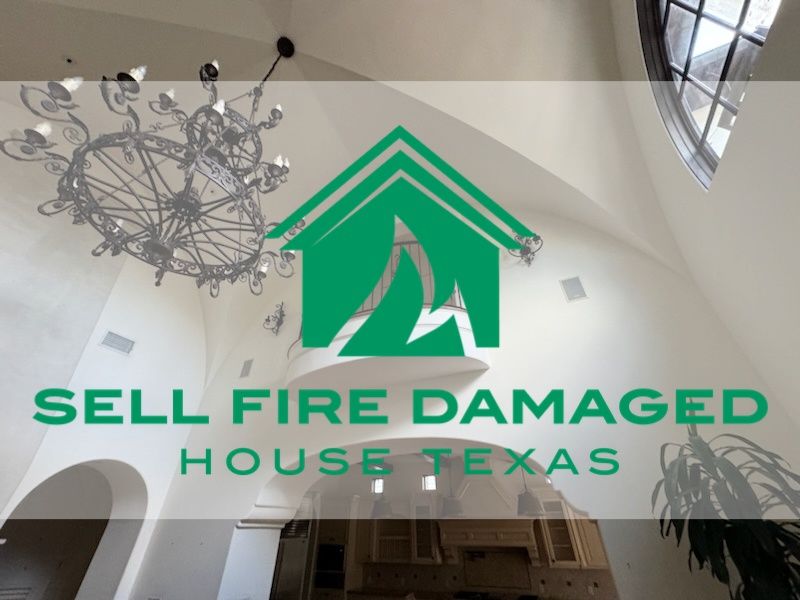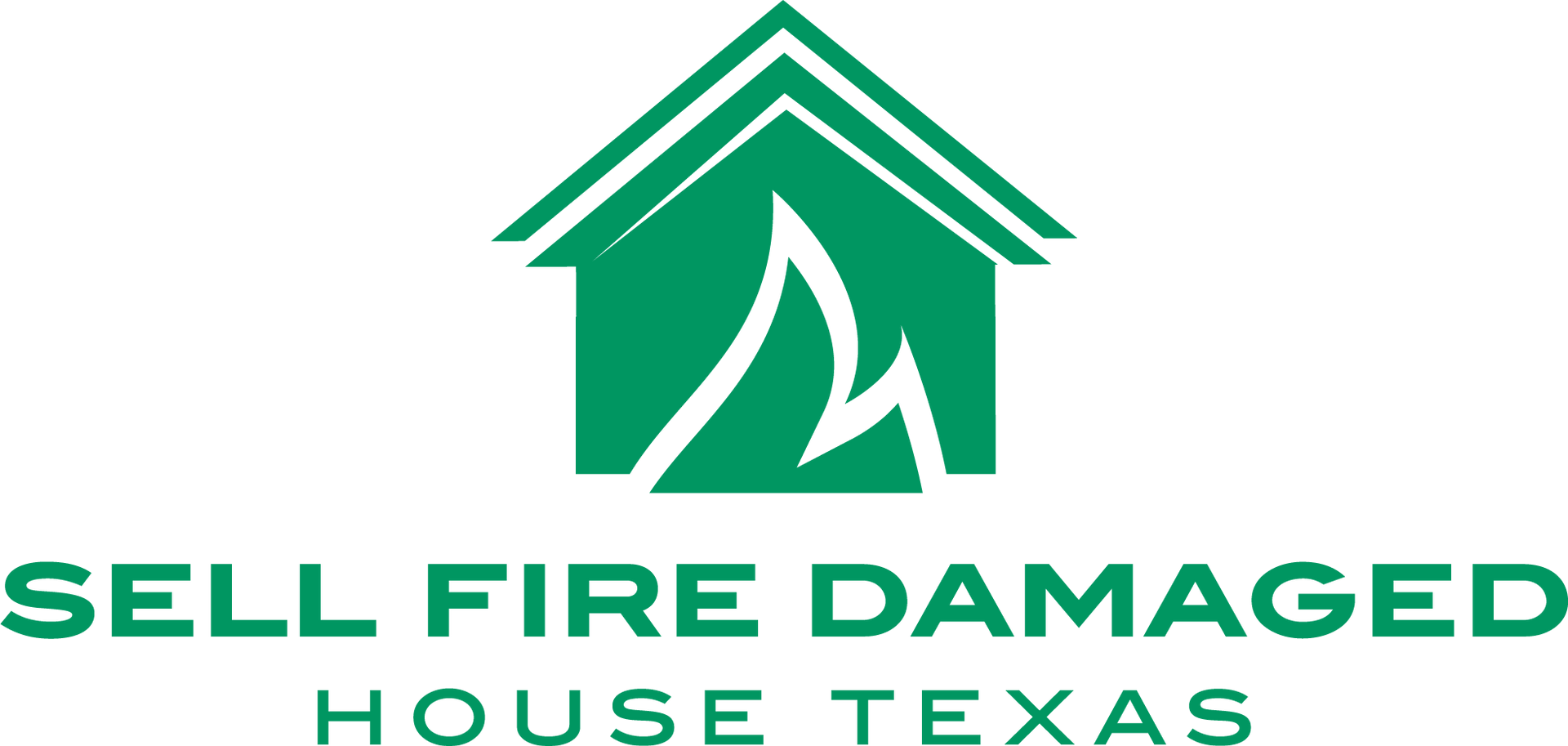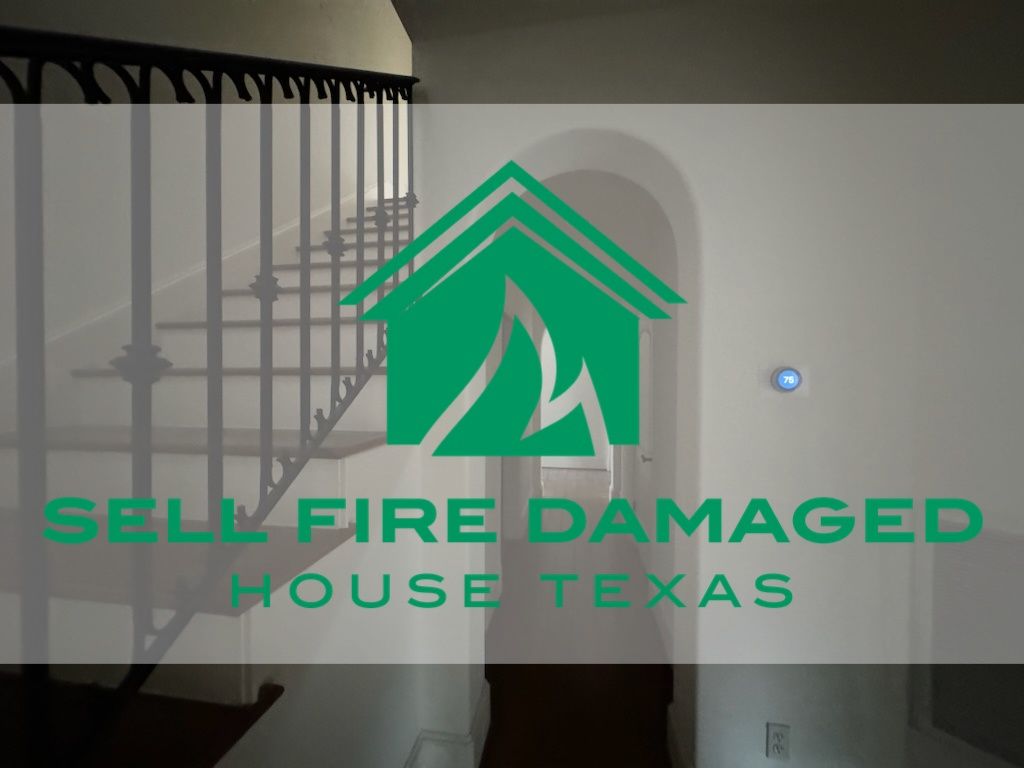Considerations To Make Before Buying A Home With Previous Fire Damage In Texas
Published on February 05th, 2025
Mia Bennett
AUTHOR
Free Offer Form
Buying a house is a big milestone. However, with a fluctuating real estate market and high competition, finding an affordable home is challenging.
Fortunately, there's a silver lining: purchasing a fire-damaged house. Despite the potential safety concerns, a fire-damaged property has several benefits.
A fire-damaged home is a
good investment for its restoration potential, freedom to add or remove structures, and cost-effective price tag. However, risks like significant damage can lead to additional expenses.
Learn the advantages of
buying a house with previous fire damage, the necessary inspections, and how to make this purchase worth it.
Fire Damaged Houses in texas: A Reality in Real Estate
Home fires are common, and a fire-damaged home is equally common in real estate markets.
A real estate agent will typically undervalue a fire-damaged home, especially if it hasn't been renovated. Buyers are attracted to its low price tag and customization potential.
With less competition, the fire-damaged home market offers cheaper costs.
However, the structural damage and risk make buying an entire house with previous fire damage a larger commitment.
Frequency of Residential Fires
According to statistics on house fires from the National Fire Protection Association, 358,300 house fires in the U.S. occur annually. Every 93 seconds, a house fire's reported across the country.
Some common house fire causes include cooking fires, heating, and electrical issues.
When a home suffers sustained fire damage, many homeowners will opt to sell the home.
Note that not every fire-damaged home is renovated. Some homeowners will sell the property as-is for lower prices.
While this makes properties damaged after a home fire a real estate bargain, restoring structural damage may cost more.
Identifying a Fire-Damaged House
If you're unsure how to find fire-damaged properties, check the following:
- Online real estate listings
- Local newspaper listings
- Real estate agents
- Property auctions
- Searching house fire records
- Online forums and communities
These are the common signs of a non-renovated house with fire damage:
- Warped frames, walls, and ceilings from fire and smoke damage
- Smoke stains and discolored surfaces
- Lingering smoke smell
- Weak structural integrity
- Cracks in walls and floors
- Mold growth from water damage
- Broken power outlets
Avoid visiting the property without professionals, and ensure the property is cleared for inspection before entering.
Assessing Direct Fire Damage
The first thing to check is direct fire damage. "Direct fire damage" refers to areas that've sustained heavy damage, like the kitchen or bedroom.
Note the following tips:
- Check if the fire happened long ago or recently, as time worsens fire damage.
- Discuss the fire's origin and damages with the seller.
- Inspect the room where the fire started and note the severity of the damage.
- Search for signs of fire or water damage.
- Ask whether renovations have been made and the expense amount.
- Discuss plans for restoring the home yourself.
Assessing direct fire damage is crucial to learn the extent of the home fire and the financial investment needed for repairs.
Wear protective gear during the inspection; fire damage makes toxic chemicals leak from ceilings and walls.
Evaluating Proximity Fire Effects
A home fire spreads quickly, affecting homes built around it.
Proximity fire effects concern structures and materials near the fire. Unlike direct fire damage, these items weren't touched by fire. However, they're typically damaged by smoke stains, mold growth, and warping.
Understanding the fire's extent gives perspective on the repairs needed.
Search for soot or mold-covered areas. Measure the distance from where the fire occurred and inquire about the fire's speed.
Ask if a neighboring home suffered fire damage and request documentation showing how the flames affected them.
Weighing Pros and Cons: Fire-Damaged House Purchase In Texas
Analyzing the benefits and risks is crucial when buying a fire-damaged house.
A home that requires more money to fix can mean a larger investment than building a new house. Fixing damages like faulty PVC pipes can be expensive.
However, fire-damaged home buyers can have the house renovated after purchase.
Understanding your budget can help you decide whether a fire-damaged property suits you.
Potential Benefits of Acquiring Fire-Damaged Property
Properties damaged by home fires are brimming with possibilities. The following sections discuss the benefits of investing in a fire-damaged property.
Reduced Buyer Competition
Fire-damaged properties have less competition due to their lower value, increased investment requirements, and additional repairs.
The less competitive market is perfect for buyers who don't want to invest in newer, potentially pricier homes. Even with the risk, some homeowners will invest in repairs to secure the house faster.
Potential for Lower Pricing
Previously damaged homes typically have a lower value, so they'll subsequently sell for less.
This makes them a real estate bargain, especially for people affected by economic downturns.
Leveraging Negotiation Power
Many sellers, burdened with the cost of repairs, opt to sell the house for a good deal to offload the financial pressure.
Potential buyers can consider the extra money the seller must spend to get the house repaired and can offer to handle the expense. Buyers can use their cost analysis to negotiate for a lower price.
With a lower price, home buyers can get a good deal for their money.
Opportunities for Custom Remodeling
Though home fires may destroy large parts of a property's structure, these damages benefit buyers who want to redesign an existing home.
Since parts of the home may be preserved, buyers can save money on repairs. They may change the house's design, increasing its property value.
Risks in Buying a Fire-Damaged House
Despite the benefits, a fire-damaged home is considered high risk due to several factors.
Reconstructing the home's interior could lead to more expenses and problems.
Unseen Damage Risks
Though spotting damages like mold, soot, or plumbing damage is reasonably easy, you could miss hidden risks.
Floorboards may break, the drywall might crumble, or pipes may have developed cracks from the flames.
Ensure you have inspections and assessments done by a structural engineer before entering the property.
Challenges in Budget Forecasting
Inspectors can give an estimate for repair costs. However, note that the estimation may change as you fix the home.
Sudden expenses can occur at any time, especially if accidents happen. These unpredictable changes lead to more costs.
Increased Insurance Premiums
Insurance companies view fire-damaged homes as high risk due to the potential for future claims. Because of this, they offer higher premiums for further coverage.
Some insurance companies don't provide premiums for fire-damaged properties, making finding insurance coverage difficult.
This challenge adds to the cost of restoring the home.
Environmental and Health Risks
If no proper health inspection is done on the property, you risk inhaling chemicals, toxic mold, soot, and smoke as you repair the home.
Medical expenses add to the investment as fire-damaged homes pose health and safety risks. Lingering chemicals have long-lasting negative effects.
The wood damage and leaking chemicals affect the property's soil, so restoring a natural look is difficult.
Essential Inspection Points for Fire Damaged Houses In Texas
Before you begin restorations, let professionals inspect the house.
These professionals will determine which rooms need to be repaired, make structural recommendations, and estimate restoration costs.
Examining Exterior Walls and Materials
Fires and smoke damage a house's exterior walls, causing warping and mold.
Check the exterior walls' strength and if new drywall is required. Consider replacing it immediately to avoid further risks.
Checking for Structural Compromises
Various parts of a house's structure must be checked:
- Check the foundation for cracking, shifting, or other flame damage.
- Inspect load-bearing weights for charring, warping, or weaknesses.
- Assess the roof and check for damage, like melted roofing materials.
- Test the flooring's strength and note sagging floors.
- Examine nails and bolts for heat damage.
- Check if the drywall needs repair or replacement.
- Evaluate if a staircase or railing requires removal or replacement.
Identifying Basement Water Damage
Basements often experience heavy water damage; if the property has one, assess its quality.
Check if standing water is left over from the fire or the drywall is still leaking. Inspect signs of mold growth and which areas you can restore or remove.
Recognizing Smoke Damage and Soot Stains
Smoke's oiliness quickly spreads through an entire house, and soot causes discoloration and damage.
Check the areas that've been most affected by smoke and whether soot-covered materials may be recovered or need removal.
Assessing Plumbing Damage
Intense flames will affect a home's plumbing system, causing mold growth, dampness, and flooding.
Ensure the house's plumbing system is checked to avoid contamination and flooding.
Evaluating Warping in Frames and Floors
When firefighters extinguish a fire, their firefighting solution warps door frames and floors, damaging its material.
Note the
warping's severity
on frames and floors and determine if it requires removal or a quick fix.
Checking Duct Cleanliness and Contamination
Extinguishing the home may lead to duct contamination, as chemical substances used for firefighting can pollute the air ducts.
Include duct cleaning during the inspection to ensure fresh air circulates properly.
Testing Older Homes for Asbestos
Homes built before 1980 typically contained large amounts of asbestos, which increases health risks if burned.
If you are purchasing an older home, include asbestos inspections and testing. Study asbestos levels from the fire and hire a service to remove it.
Detecting Toxic Black Mold
A mold outbreak is common post-home fire, spreading toxic airborne spores.
Check damp walls for mold and remove them with the help of professionals.
Fire Damaged House Restoration Process In Texas

After the inspections and assessments comes the restoration process. Note that the price for fire damage restoration can skyrocket if you buy a heavily damaged house.
Fortunately, professionals and experts can turn a fire-damaged home into an ideal property.
Enlisting Professional Restoration Services
Research local professional restoration services with a background in recovering fire-damaged homes.
They can remedy smoke damage, mold, water issues, and ruined furniture without causing more issues.
Look through customer testimonials and past projects to know other people's experiences with them and how they might affect the restoration.
Estimating Restoration Duration and Costs
Note all restoration costs and consult real estate experts about possible adjustments.
Look into your city or state's rules regarding construction permits. Consider the time needed to gain permits and add them to the expenses.
Include the needed materials and availability, as delays can occur at any time. A project management plan can help outline necessary changes and renovation costs.
Check your insurance policy for coverage towards reconstruction.
Post-Restoration Impact on Property Value
Property values can rise post-restoration depending on these factors:
- The material quality used in the reconstruction
- The property's new design
- If the reconstruction fixed all damage
- Compliance with local building codes
The property's value will be enhanced if the house improves according to the above factors.
Navigating Legal and Insurance Aspects In Texas
Whether they're buying a fire-damaged home or a brand new one, all homeowners go through legal and insurance aspects to secure the home.
The fire damage impacts how insurance companies view the home, and restorations affect your coverage. Considering all regulations is important to avoid legal issues arising from the house fire.
Legal Factors in Fire Damaged House Purchase
There are several legal factors to consider as you renovate the property:
- Check if there are any issues with titles and property ownership. Ensure that there are no lingering legal disputes that might hinder the purchase.
- Review all contractual agreements between you and the seller, professional service company, and insurance company. See if there are specific rules and responsibilities you have to abide by.
- Consider all potential liability concerns, like hidden damages and health risks.
- Disclose the property's fire and renovation history to the buyer, such as the extent of damage and new additions.
- If the fire affected neighboring homes, check that there are no pending legal settlements with them that you'll have to deal with.
By ensuring full transparency and following building codes, legal issues won't be a problem.
Insurance Considerations for Fire Damaged Property
Filing a claim with your insurance provider is an important first step when purchasing a fire-damaged home.
With proper documentation and professional help, you'll know your coverage's limits and how the property affects your insurance.
Consider additional coverage options, especially since the restoration might incur more expenses. Keep all expense records related to the fire, and be open to negotiations to reach a fair settlement.
Frequently Asked Questions
Understanding the many aspects of buying a house with previous fire damage might feel overwhelming. Find out more with these quick questions.
What Are the Potential Benefits of Buying a Fire Damaged House?
A fire-damaged house is cheaper than a new home and provides new ways to renovate during construction.
There is less competition for these properties, and improving their value through renovations may lead to a better ROI for sellers.
What Are the Risks Associated With Buying a House With Previous Fire Damage?
There may be hidden damages missed by inspections and challenges in forecasting renovation expenses.
Additionally, fire-damaged houses typically have higher premiums, which can reduce a homeowner's effective coverage. The sustained fire damage may also affect nearby environments.
What Should I Look for When Inspecting a Fire Damaged House?
Check for these specific elements:
- Cracks on walls and floors
- Toxic molding
- Serious structural damage
- Plumbing damage
- Faulty electrical wiring
- Duct contamination
- Damp basements
- Asbestos contamination
What Is the Process of Restoring a Fire Damaged House?
Rebuilding a house after a fire includes the following:
- Inspect the structural damage.
- Notify your insurance company to file a restoration claim.
- Hire restoration services to assess the home.
- Secure the property to ensure safety.
- Compile renovation details and prioritize repairing heavily damaged areas.
- Ensure all renovations made comply with local building codes.
- Keep documentation of all the renovations and expenses.
- Do a final assessment to ensure no liability risks remain.
Before returning home after a house fire, ensure that professionals have identified the areas that need further construction services.
How Does Buying a Fire Damaged House Affect Insurance?
Insurance companies view fire-damaged houses as high risk, increasing insurance premiums and potentially complicating the process of getting coverage.
Insurance policies may have limitations against fire-damaged properties or higher deductibles.
Homeowners must follow fire damage disclosure when selling, as a lack of transparency can cause legal problems.
Conclusion
Buying a house with previous fire damage is a great investment if you budget well, consider all options, and follow safety regulations.
Consider your limitations as you search for an ideal home. Conduct
in-depth structural assessments alongside professionals and consult your insurance company about additional coverage.
Practice fire safety and keep renovations clean to ensure a smooth, successful process.

